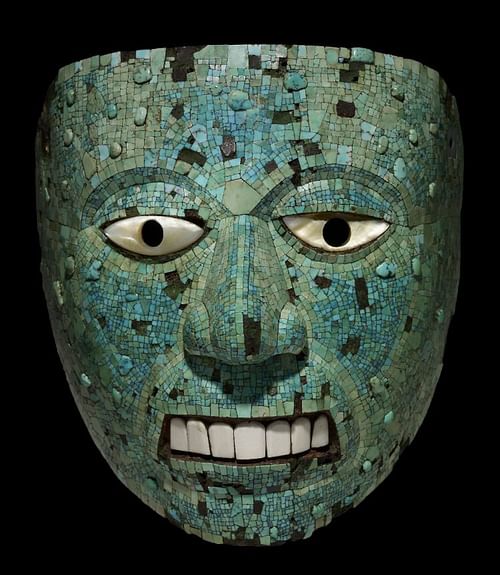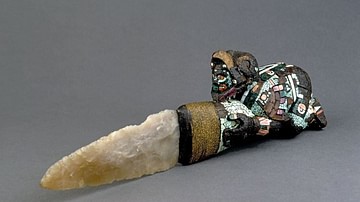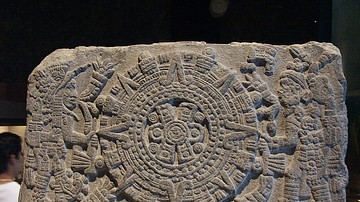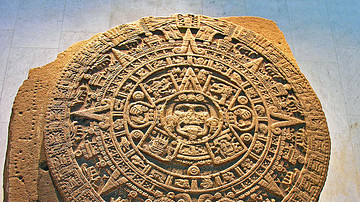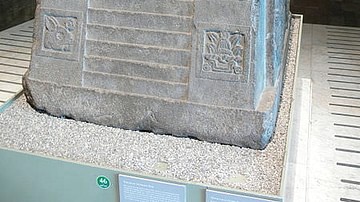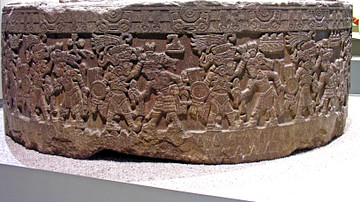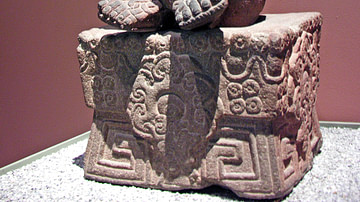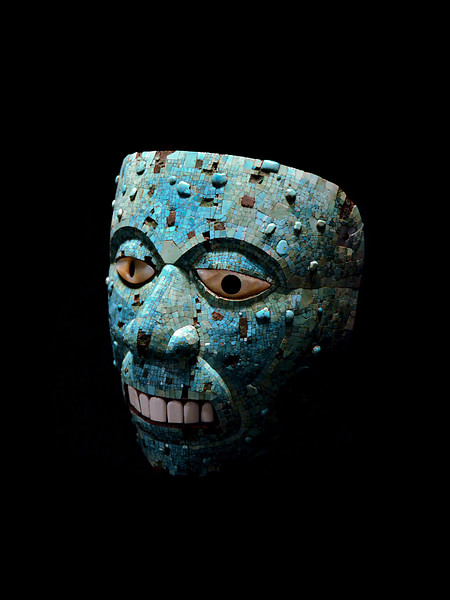
Xiuhtecuhtli or 'Turquoise Lord' was the Aztec god of fire and also closely associated with young warriors and rulers. To the Maya he was known as Chac Xiutei. Xiuhtecuhtli was the patron of the day Atl (water) and the trecena period 1 Coatl (Snake). He was the 1st Aztec Lord of the Night and 1st of the Lords of the Day. His nagual or animal spirit was Xiuhcóatl or the Fire Serpent and his special number was three because in traditional Mesoamerican homes there were three hearths. In Mesoamerican mythology the fundamental element of fire was thought to run through the entire universe and wherever there was fire, so too was Xiuhtecuhtli.
The name of the god derives from the Nahuatl word for turquoise xihuitl, which also means 'year' suggesting the god also represented time. Xiuhtecuhtli was often identified or equated with the older god of fire Huehueteotl (usually portrayed in stark contrast to the youthful Xiuhtecuhtli as a wrinkled old man with no teeth) who was himself a possible reincarnation of the still older Olmec God I. The equivalent fire deity for the Otomί was Otontecuhtli.
Toxiuhmolpilia
One of Xiuhtecuhtli's most important roles was as overseer of the Toxiuhmolpilia festival or New Fire Ceremony (also called Binding of the Years). Held once every 52 years on the completion of one full cycle of the Aztec calendar (xiuhmolpilli), the primary function of the festival was to ensure the successful renewal (or re-occurrence) of the sun.
During the festival all fires, from temples to household hearths, were symbolically extinguished and idols were cleansed with water, streets swept and old cooking implements and hearth stones thrown away. Then, atop Mt. Uixachtecatl (or Citlaltepec), near the Aztec capital of Tenochtitlán, priests gathered at midnight and awaited a precise alignment of the stars. Only when the Tianquiztli (Pleiades) reached the zenith and the Yohualtecuhtli star shone brightly in the very centre of the sky was a sacrifice made to Xiuhtecuhtli by cutting out the heart of a sacrificial victim. Fire was then kindled inside the open chest cavity and if the fire lit successfully then all was well and the fire was taken to re-light all of the city's fires. If the flame had not lit successfully then it was believed to signal the coming of terrible monsters, the Tzitzimime, who would roam the darkness eating all mankind.
Representations in Art
Living up to his name of Turquoise Lord, the god was very often represented in Mesoamerican art using turquoise mosaic and wearing his ruler's crown (xiuhuitzolli), in particular in the Late Postclassical period (from 1200 CE). Other common features are a xiuhtototl - the turquoise-coloured bird - hanging from his forehead, the xiuhcoatl fire serpent at his back and a butterfly-shaped pectoral, also in turquoise. These elements were also commonly seen in depictions of Toltec warriors, reminders of the god's close association with that class. One of the most celebrated and striking representations of the god is the 14th century CE turquoise mosaic mask with conch shell eyes, now in the British Museum.
